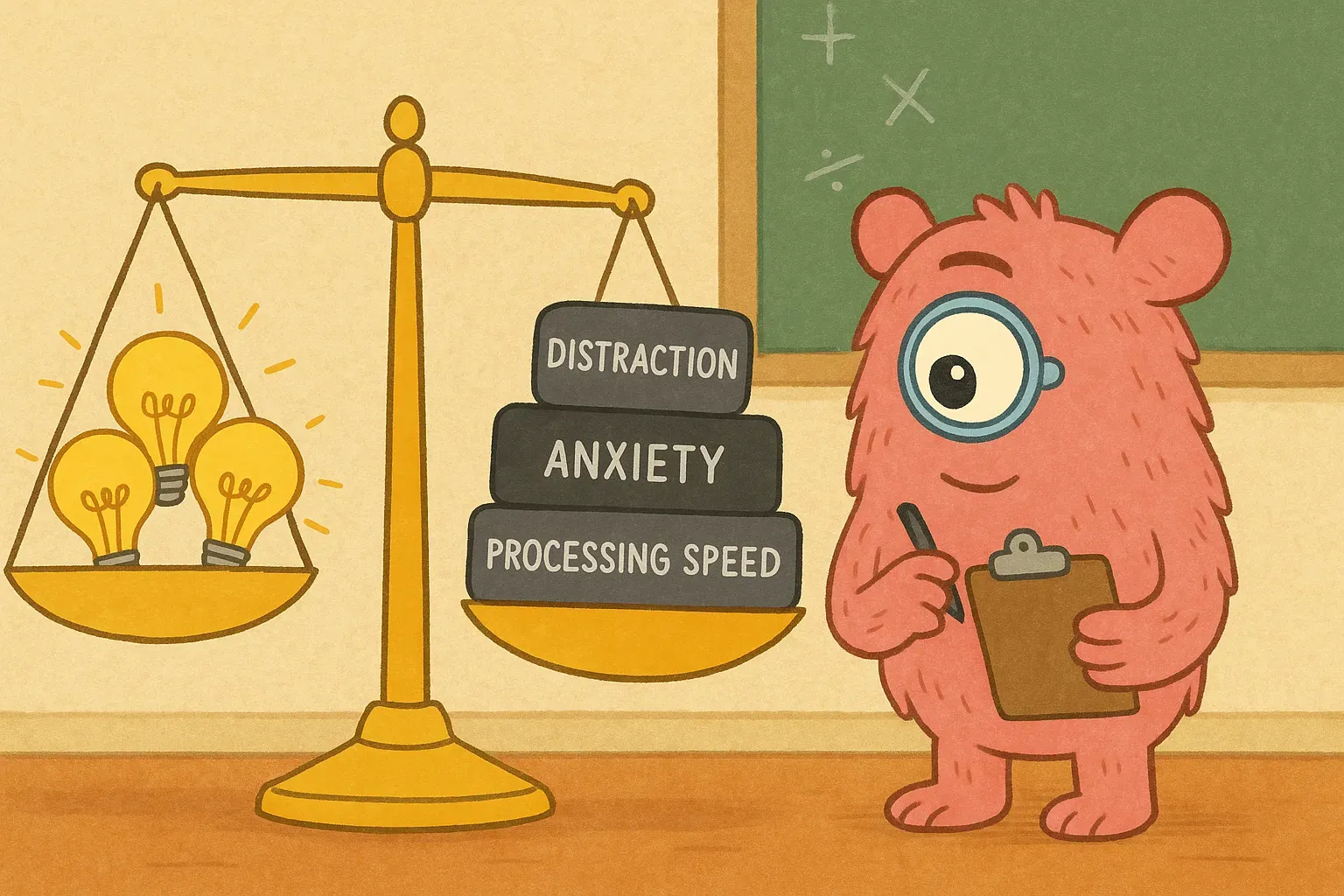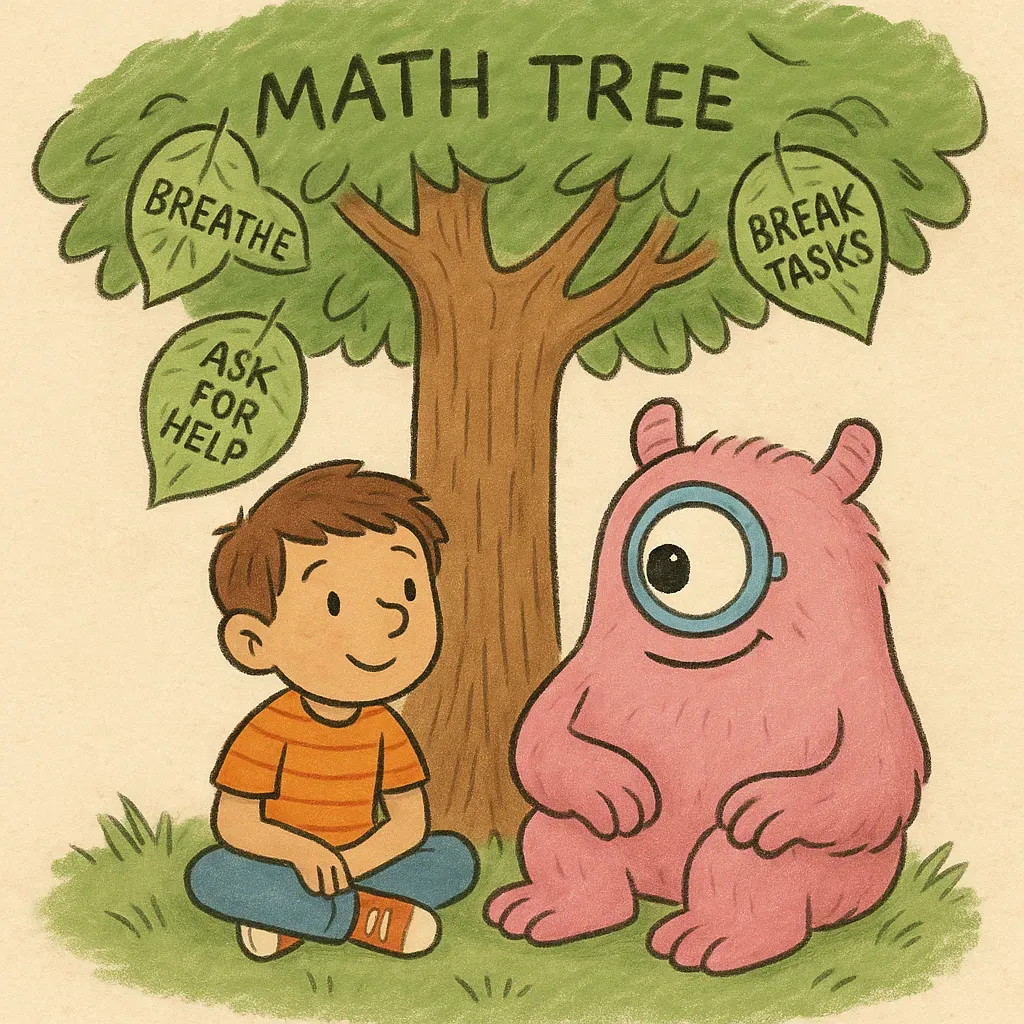Supporting 2e Learners in Math: When Gifted Meets Neurodivergent
TL;DR: Twice-exceptional (2e) students are gifted in areas like math but also face neurodivergent challenges such as ADHD or dyslexia. Research suggests focusing on strengths-based strategies, differentiated instruction, and accommodations to help them thrive. Practical tips include leveraging interests for engagement, providing visual aids, and fostering collaboration between parents, teachers, and specialists. Success stories show that with proper support, 2e kids can excel academically and emotionally. For more, explore our tips below.
Understanding Twice-Exceptional (2e) Learners
If you're a parent of an elementary school child in the US who seems brilliantly ahead in math one moment but struggles with focus or processing the next, you might be navigating the world of twice-exceptional, or "2e", learners. These children are gifted in one or more areas - often demonstrating advanced reasoning or creative problem-solving - while also experiencing neurodivergence, such as autism spectrum disorder (ASD), ADHD, or learning disabilities like dyslexia. In math, this duality can mean a child grasps complex concepts intuitively but faces barriers in showing their work or staying engaged during routine drills.
Research indicates that 2e students often go underidentified in schools, with disabilities masking their gifts. For instance, a study using data from the Early Childhood Longitudinal Study found that approximately 17-18% more students with Individualized Education Programs (IEPs) should be identified as gifted based on their math and reading achievements, highlighting a significant gap in recognition. This underrepresentation can lead to frustration for both kids and parents. The good news is that targeted support can make a big difference.
As a parent or teacher, recognizing these traits early is key. 2e kids might excel in logical thinking or pattern recognition but struggle with executive functions like organization or working memory, which are crucial in math classrooms. Teachers in neurodiverse settings can play a pivotal role by adapting lessons to honor both strengths and needs.
Challenges 2e Learners Face in Math
Math can be a double-edged sword for 2e students. Their giftedness might shine in abstract reasoning or innovative problem-solving, but neurodivergence can create hurdles. Common challenges include inconsistent performance, where a child solves advanced problems mentally but falters on basic computations due to attention issues or processing speed limitations.

Peer-reviewed studies show that disabilities often obscure math talents. For example, research on 2e students with ASD notes struggles with mathematics despite stereotypes of STEM excellence, often due to anxiety or sensory sensitivities. Another review highlights how learning disabilities like dyslexia affect working memory, making math formulas easier to handle than verbal tasks but still leading to uneven skills.
In elementary school, these challenges might manifest as behavioral issues or disengagement if lessons aren't differentiated. Teachers report observing creativity and advanced verbal skills in interests but note restlessness and inconsistencies that impact math consistency. Factors like low household income or internalizing behaviors can further amplify underidentification in math gifted programs.
Practical Tips for Supporting 2e Learners in Math
Supporting 2e kids requires a strength-based approach, focusing on what they do well while addressing challenges. Here are research-backed tips tailored for parents and teachers of elementary students.
1. Leverage Strengths and Interests
Start by identifying your child's math strengths—perhaps pattern recognition or logical puzzles—and tie lessons to their passions. Studies emphasize providing interest-based opportunities to boost engagement. For example, if your child loves gaming, use math apps to analyze scores or probabilities.
Check out our post on Why Visual Thinkers Struggle with Abstract Math (and How to Help) for ideas on incorporating visuals.
2. Differentiate Instruction and Provide Accommodations
Differentiated instruction allows multiple ways to learn and demonstrate knowledge. Research supports using tools like visual aids or manipulatives to scaffold complex topics. For 2e students with ASD, break down problems into steps and offer extended time. Teachers can use Universal Design for Learning principles to make math accessible. Parents, advocate for IEPs that include math accommodations like voice-to-text for showing work.
3. Foster Collaboration and Professional Support
Collaboration between special education and gifted teams is crucial. A study recommends training educators to reduce deficit thinking and use multiple criteria for identification. Parents, share home successes with teachers; teachers, seek professional development on 2e needs.
Explore inclusive strategies in our blog: 10 Inclusive Math Teaching Strategies That Support All Learners.
4. Address Social-Emotional Needs
2e kids often face anxiety or isolation. Research suggests building relationships with caring adults such as teachers and counsellors - and promoting emotional regulation. In math, create safe spaces for questions and pair kids with peers for collaborative problem-solving. Use calming phrases during tough moments.
For more on this, see our tips in Math Homework Without Meltdowns: Time Management for Neurodivergent Kids.

5. Use Technology and Tools
Apps and tools can bridge gaps. For dysgraphia, allow typing math explanations. Studies on 2e support assistive tech for organization. Monster Math offers adaptive games that build fluency while accommodating different paces.
Quick Comparison of Support Strategies
Strategy | Benefit for 2e in Math | Research Backing |
|---|---|---|
Strength-Based Focus | Increases engagement, reduces frustration | |
Differentiation | Accommodates uneven skills | |
Interest Integration | Boosts motivation in neurodiverse settings |
Success Stories: Real-World Inspiration
Hearing about others' journeys can be encouraging. You can read such stories here shared by Dr. Hayes.
FAQ
Q: What does 2e mean?
Twice-exceptional refers to students who are gifted and have neurodivergence or disabilities, as defined in research (teachers' reported beliefs about giftedness).
Q: How can I identify if my child is 2e in math?
Look for advanced reasoning alongside inconsistencies; use multiple assessments as recommended in underidentification studies.
Q: What accommodations help in math?
Extended time, visual aids, and tech tools, backed by inclusive education reviews.
Q: Should I advocate for gifted programs?
Yes, but ensure they address disabilities; collaboration between Special ed and Gifted teams is key.
References
- Cody, R. A., et al. (2022). Teachers' reported beliefs about giftedness among twice exceptional and culturally, linguistically, and economically diverse populations. Frontiers in Psychology.
- Maddocks, D. L. S., et al. (2024). Special Education Status and Underidentification of Twice-Exceptional Students. Education Sciences.
- Anderson, A. (2019). Supporting Twice Exceptional Students Within the General Education Classroom. Hamline University.
- Reis, S. M., & Renzulli, J. S. (2025). Research-Based Strength-Based Teaching and Support Strategies for Twice-Exceptional High School Students with Autism Spectrum Disorder. Focus on Autism and Other Developmental Disabilities.
- Sakar, S., & Baloglu, M. (2025). Teacher experiences with twice-exceptional students. Gifted Education International.
- Wu, J., et al. (2020). Twice-Exceptional Students: Review of Implications for Special and Inclusive Education. Education Sciences.
- Austermann, Q., et al. (2025). Evidence-Based Instructional Practices for Twice-Exceptional Students With Autism. Gifted Child Quarterly.
- Colorado Department of Education. (n.d.). Twice-Exceptional Students: Gifted Students with Disabilities - Success Stories. Colorado State Publications.
- Made for Math. (n.d.). Twice Exceptional (2e): Gifted And Disabled. Made for Math.

